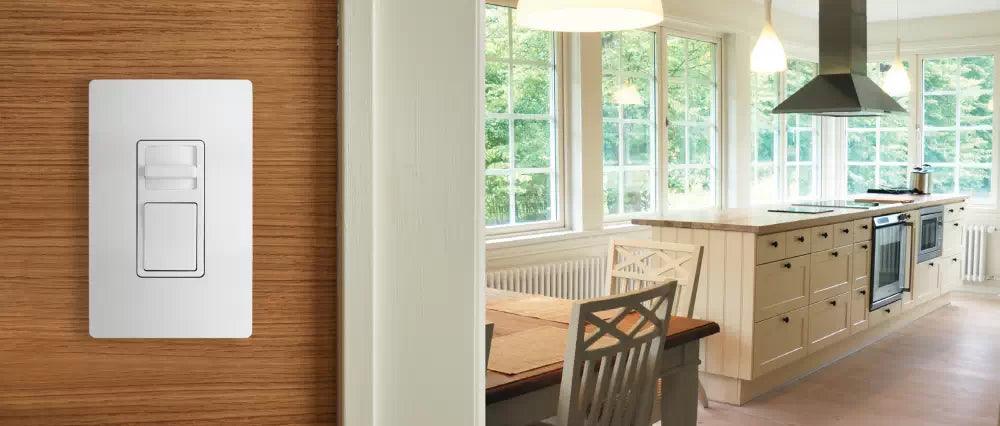Dimming lights is not only a great way to save energy but also to create different moods and enhance the ambiance of a space. With the rise in popularity of LED technology, 0-10V dimming has become a widely used method for controlling the light output of LED fixtures. In this comprehensive guide, we will delve into the world of 0-10V dimming, exploring its basics, advantages, applications, and troubleshooting techniques.
Understanding 0-10V Dimming
0-10V dimming is an analog method of controlling lighting fixtures that utilizes a control voltage signal to adjust the light output. The signal ranges from 0 to 10 volts, hence the name 0-10V dimming. At 0 volts, the light dims to its minimum level, while at 10 volts, it operates at its maximum brightness. This simple and straightforward lighting control system provides smooth operation and allows for dimming levels as low as 10%, 1%, and even 0.1%.
How Does 0-10V Dimming Work?
The 0-10V dimming system consists of a dimming driver and a control signal. The dimming driver includes a circuit with two wires: a purple wire representing the +10V signal and a gray wire representing the common signal. When the wires are open, the control signal remains at 10 volts, resulting in the light fixture operating at 100% brightness. Conversely, when the wires are shorted or touching each other, the control signal drops to 0 volts, causing the light to dim to its lowest level.
To control the light output, 0-10V dimmer switches are used to pull down or "sink" the voltage, adjusting the signal from 10 volts to lower levels. The dimming range can vary depending on the capabilities of the driver, allowing for flexibility in creating the desired lighting atmosphere.
Advantages of 0-10V Dimming
0-10V dimming offers several advantages that make it a popular choice for lighting control:
- Energy Efficiency: Dimming lights using the 0-10V method allows for reduced power consumption, leading to energy savings. By lowering the light output, you not only save money on electricity bills but also extend the lifespan of LED lamps.
- Versatility and Mood Enhancement: With the ability to adjust the light intensity, 0-10V dimming provides the flexibility to create different moods and atmospheres. Whether you need bright light for a task-oriented environment or a dim, cozy ambiance for relaxation, this dimming method allows you to tailor the lighting to suit your needs.
- Compatibility with LED Fixtures: 0-10V dimming is widely compatible with LED fixtures, making it suitable for a variety of applications. From retail spaces and office buildings to entertainment venues and theaters, this dimming system can effectively control the light output of dimming-compatible LED fixtures.
- Simple and Reliable Technology: 0-10V dimming is a well-established and recognized technology, adhering to the International Electrotechnical Commission (IEC) standard number 60929 Annex E. Its simplicity makes it easy to use, diagnose, and understand, minimizing complications and ensuring reliable performance.
Applications of 0-10V Dimming
0-10V dimming finds its applications in various indoor and outdoor settings. Some common areas where this dimming system is utilized include:
1. Commercial Spaces
- Retail Stores: 0-10V dimming is ideal for creating the right lighting atmosphere in retail spaces. Whether you want to highlight specific products or create an inviting ambiance, this dimming method allows you to control the light output accordingly.
- Office Buildings: Dimmable LED fixtures with 0-10V dimming capability are well-suited for office environments. Adjusting the light intensity can enhance productivity, reduce eye strain, and create a more comfortable working atmosphere.
- Entertainment Venues and Theaters: Lighting plays a crucial role in setting the mood and creating captivating experiences in entertainment venues and theaters. 0-10V dimming allows precise control over the lighting, enabling dynamic lighting effects and scene changes.
2. Outdoor Commercial Applications
- Sports Facilities: Outdoor sports facilities often require high-intensity lighting for optimal visibility. 0-10V dimming enables the flexibility to adjust the lighting levels based on different sporting events and activities.
- Parking Lots and Streets: Outdoor commercial areas such as parking lots and streets benefit from the versatility of 0-10V dimming. It allows for energy-efficient lighting during low-traffic periods while providing brighter illumination when needed.
3. Residential Applications
- Living Spaces: 0-10V dimming can be used in residential settings to create a comfortable and inviting atmosphere in living rooms, bedrooms, and kitchens. It allows for customization of lighting levels to suit different activities and moods.
- Restaurants: Dimmable LED fixtures with 0-10V dimming can help create a cozy and intimate dining experience in restaurants. The ability to adjust the lighting intensity allows for a more personalized ambiance for patrons.
4. Other Applications
- Hospitals and Healthcare Facilities: 0-10V dimming can be beneficial in healthcare settings, where lighting levels can affect patient comfort and recovery. Dimming the lights in patient rooms and common areas can create a calming environment.
- Warehouses and Industrial Spaces: In warehouses and industrial settings, 0-10V dimming can provide energy-efficient lighting solutions. The ability to adjust the brightness based on the specific task or area can enhance safety and productivity.
What Do You Need for 0-10V Dimming?
To implement 0-10V dimming, you'll need the following components:
- LED Fixtures: Ensure that your LED fixtures are compatible with 0-10V dimming. Most LED commercial fixtures are designed to be dimming compatible, but it's essential to verify before installation.
- 0-10V Dimming Drivers: Dimmable LED fixtures require compatible 0-10V dimming drivers. These drivers are specifically designed to receive the control voltage signal and adjust the light output accordingly.
- 0-10V Dimmer Switches: Install 0-10V dimmer switches to control the voltage signal sent to the dimming drivers. These switches allow you to adjust the light intensity within the dimming range provided by the driver.
- Wiring: Use low-voltage wiring, preferably shielded pair wiring, to connect the dimmer switches to the dimming drivers. Shielded wiring minimizes interference and ensures optimal dimming performance.





